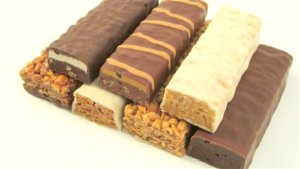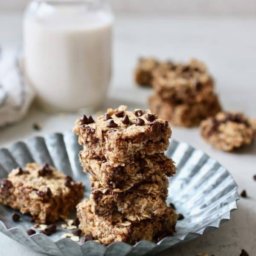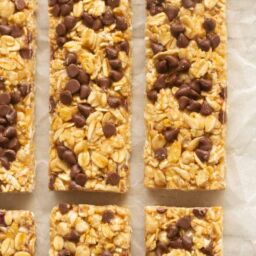Protein bars were designed to provide a portable source of calories to replace a meal or a snack. Protein helps to maintain and build strong muscles and bones and because protein is more slowly digested and absorbed, it also helps to regulate blood sugar and appetite.
But with so many protein bars on the market, how do you know which one to choose?
What To Look For In A Protein Bar
- How much protein does it have? The amount of protein in a typical protein bar ranges from 10 to 30 grams. If you’re eating the bar as a snack, 10-15 grams of protein is fine. However, if the bar is replacing an entire meal, look for one that contains at minimum 20+ grams of protein.
- What kind of protein is in it? Protein bars are typically made up of either whey, egg white, soy, pea, hemp, and other vegetarian sources. In terms of protein quality, whey and egg white are your best choices. If you are vegan or vegetarian, soy would be your next best option. And if you don’t consume soy, then any of the other vegetarian proteins are fine.
- What is it sweetened with? Even though protein bars are formulated to take the place of a meal, they don’t make protein bars in flavors like chicken and broccoli or steak and potatoes. Instead, we get meal replacement bars that taste like a dessert that’s sweetened with honey, coconut sugar, agave, brown rice syrup and more. Don’t get too caught up in these “healthy” sounding natural sweeteners. The best thing to do is look to see how many grams of sugar it contains. You’d want to count that toward your added sugar allowance, which is around 25 grams per day. If the bar is low carb or keto, it’s probably sweetened with artificial sweetners like sucrolose or aspartame, stevia, monkfruit, or sugar alcohols like sorbitol or erythritol, or a combination of all. None of these are perfect, because artificial sweeteners tend to have a negative impact on gut health, which can cause mild digestive distress. But out of all the artificial sweeteners, I’d lean toward monkfruit and sugar alcohols. BUT, I still always recommend consuming protein bars in moderation.
- How many calories does it have? Protein bars range from 120 to almost 400 per bar. Regardless of whether those calories are from protein, carbohydrate, sugar, or fat, they need to fit into your food budget (calories) for the day.
- What are the ingredients? Once you find a bar that has the right amount of protein and calories, take a look at the ingredient list to see what else is in there. Don’t be too impressed by ingredients like adaptogens, fatty acids, herbal extracts, or added vitamins and minerals. Most of these are unnecessary or included in quantities that are too small to have any benefit. On the other hand, a long list of chemicals and additives is a sign of a highly processed food. Ingredient lists should read more like a recipe and less like a chemistry lab assignment.
When it comes to protein bars, theres a lot of choices. But remember, protein bars are never going to be an ideal form of nutrition. Choose your protein bars well, but try to save them for those times when real food is not an option. Stuck at a meeting for hours? One the go all day? Lunch was early and dinner is late? Those might be times when a protein bar would come in super handy.
I typically only recommend having a protein bar no more than 2-3 times a week. When I do have an occasional protein bar, I typically eat a One Protein Bar or eat a thinkThin Protein Bar
I ALWAYS recommend having real food over a protein bar, if real food simply isn’t available.
A better option is protein powder since protein powders typically have fewer fillers and sweeteners. I personally use this Protein Powder. I have it in chocolate and it is so good! I mix a scoop of it with water when I am on the go, or if I am at home, I blend it up with fruit and a little bit of peanut butter.
GET MORE aftann
If you have a question that you think would make a good topic for a blog post, you can email me or message me through Facebook or Instagram. I’d love to hear from you! If you’d like to find out more about my nutrition coaching programs and personal training, you can learn more here.








